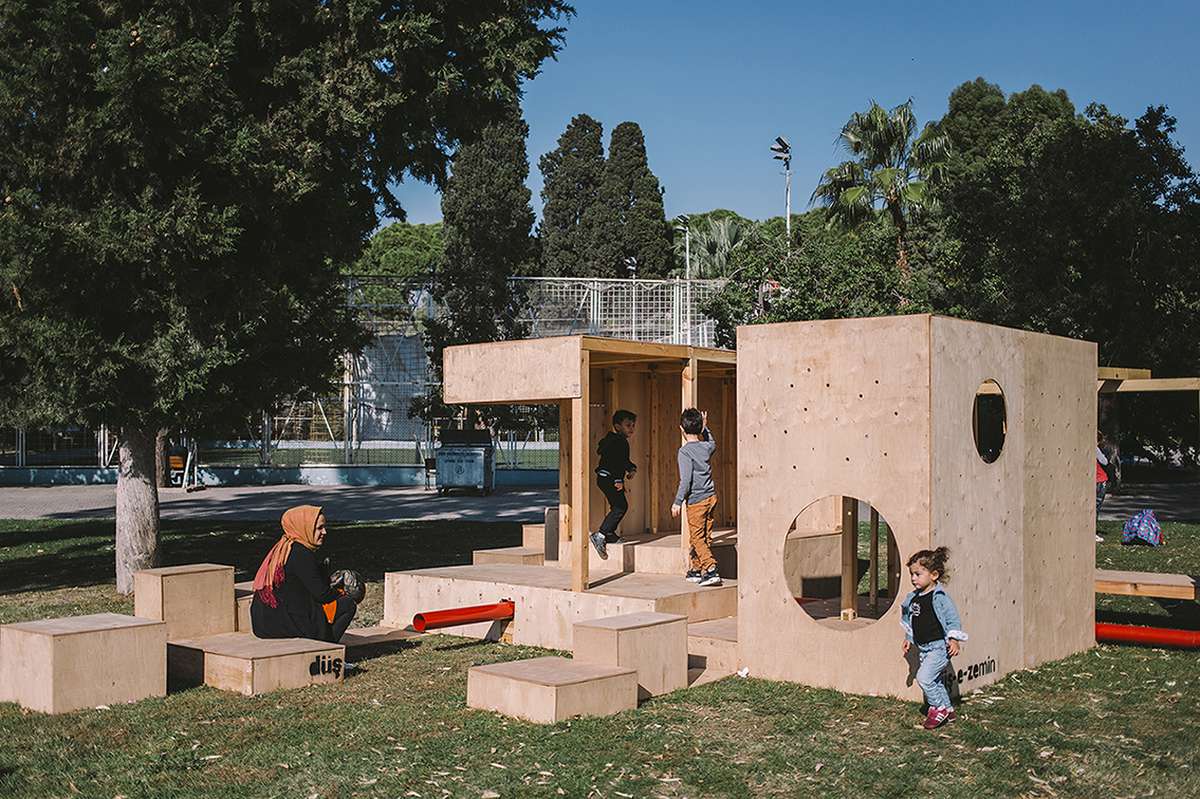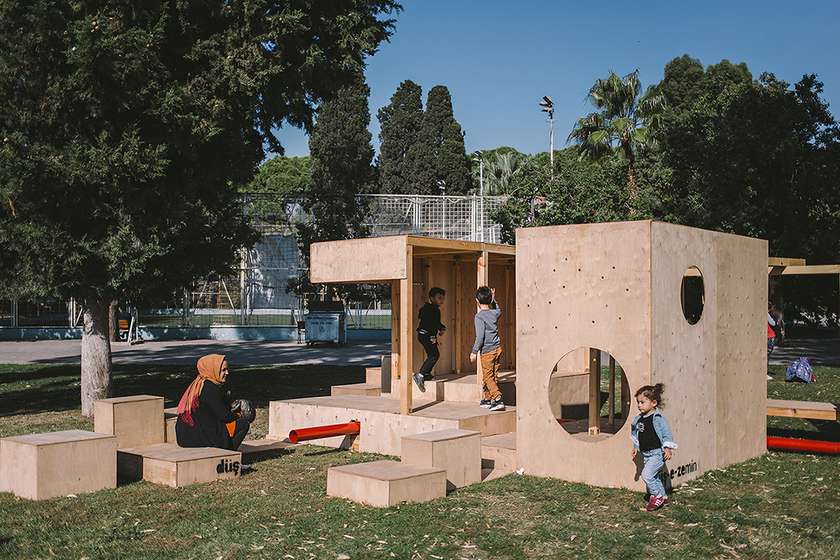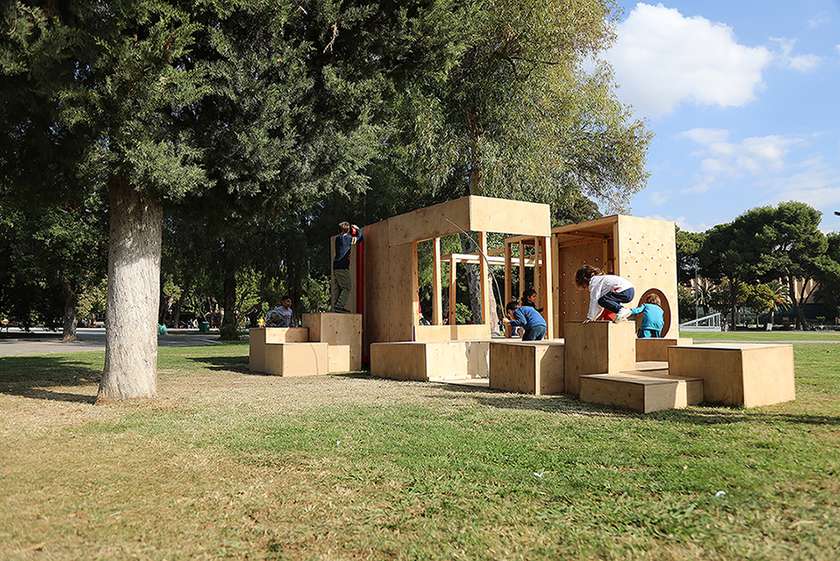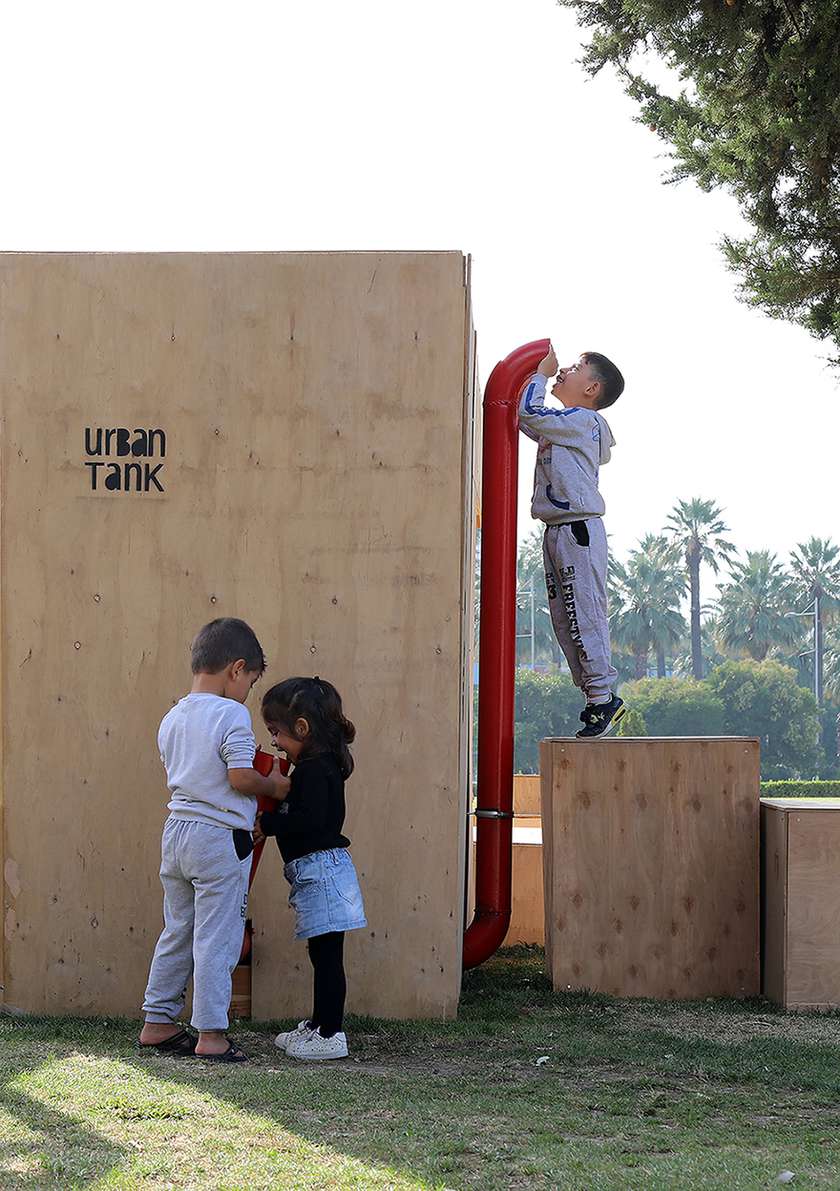Idea by
Melis Varkal & Tuba Doğu
UrbanTank
Call for ideas 2020
Düş-e-zemin
Düş-e-zemin

- Systemic changes
Designed within Good Design Izmir_4, the scope of Düş-e-zemin (translated as Dream-Ground) is to enhance the relationship that locates the child in the center and further strengthens its presence in the urban sphere while opening up a new space and transforming it into a field of experience. Düş-e-zemin enables a flexible architectural approach by focusing on user-oriented design, in contrast to predetermined playgrounds that are handled in a functionalist manner. With this intention in mind, the project is designed in a minimalist way to trigger the imagination of children by focusing on their sensory skills and physical capabilities. The aim is to offer the opportunity to interpret and transform the space.
The project has shown how kids can quickly appropriate if non-functional intermediate spaces are offered to them. The project has the potential to redirect the children's activities, which have often been confined to closed areas, to public open spaces.

Located in Kültürpark, in one of the most visible, breathing and qualified public spaces in Izmir, Düş-e-zemin is a prominent center of attraction for children.

The design of the installation is a combination of different spatial qualities (such as open/enclosed, low/high, light/dim), basic physical activities and senses, and the interaction of these design inputs aimed to trigger the imagination of children.

The red metal pipes used for transmitting sound reach at different heights and can be accessed from all sides.
Düş-e-zemin
Düş-e-zemin

- Systemic changes
Designed within Good Design Izmir_4, the scope of Düş-e-zemin (translated as Dream-Ground) is to enhance the relationship that locates the child in the center and further strengthens its presence in the urban sphere while opening up a new space and transforming it into a field of experience. Düş-e-zemin enables a flexible architectural approach by focusing on user-oriented design, in contrast to predetermined playgrounds that are handled in a functionalist manner. With this intention in mind, the project is designed in a minimalist way to trigger the imagination of children by focusing on their sensory skills and physical capabilities. The aim is to offer the opportunity to interpret and transform the space.
The project has shown how kids can quickly appropriate if non-functional intermediate spaces are offered to them. The project has the potential to redirect the children's activities, which have often been confined to closed areas, to public open spaces.

Located in Kültürpark, in one of the most visible, breathing and qualified public spaces in Izmir, Düş-e-zemin is a prominent center of attraction for children.

The design of the installation is a combination of different spatial qualities (such as open/enclosed, low/high, light/dim), basic physical activities and senses, and the interaction of these design inputs aimed to trigger the imagination of children.

The red metal pipes used for transmitting sound reach at different heights and can be accessed from all sides.